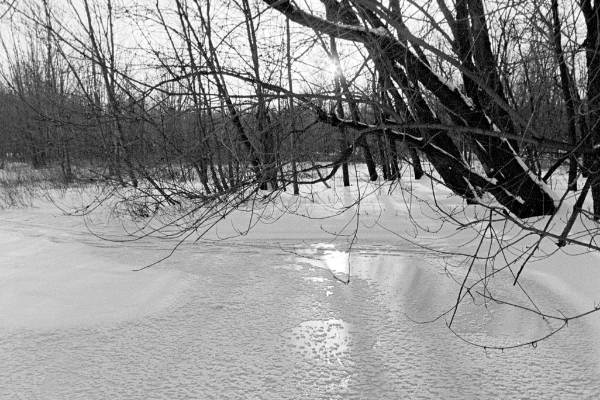Cold temperatures are in the forecast for Norfolk County, but that doesn’t mean area waterways will be safe for skating or snowmobiling any time soon.
The Norfolk County Fire Department is reminding residents that no ice is safe ice – especially when temperatures haven’t been cold enough for long enough to form thick ice.
“People think that because it’s cold out and there’s ice on the water, it must be safe to go out on,” said Cory Armstrong-Smith, fire prevention officer with the Norfolk County Fire Department. “But that’s simply not true. It can take many consecutive days of sub-zero temperatures to form ice that’s thick enough to venture out on – and even then, there are still risks.”
At least four inches of ice are necessary for activities such as ice fishing or skating, and more for snowmobiling. The quality and thickness of ice can change quickly, however, and can vary from location to location.
The Fire Department offers a number of tips for staying safe on and around frozen water this winter, including:
- Avoid travelling on ice at night. At night it is very difficult to see open holes in the ice. This is a frequent cause of snowmobile drowning.
- Never go onto ice alone. A buddy may be able to rescue you, or go for help if you get into difficulty. Before you leave shore, tell someone where you are going and your expected time of return.
- Stay off river ice Avoid moving water and stay off water bodies with changing water levels. River currents can quickly change ice thickness over night or between different parts of the river.
- Wear a snowmobile flotation suit or a lifejacket. Wear a lifejacket or PFD over your snowmobile suit or layered winter clothes to increase your survival chances if you do go through the ice.
- Always actively supervise children playing on or near ice. Children should always be under active adult supervision. Children that aren’t within arm’s reach have ventured too far. Insist that they wear a lifejacket/PFD or thermal protection buoyant suit.
For more information about local ice thickness and seasonal patterns, local residents are encouraged to visit the Grand River Conservation Authority’s website at grandriver.ca

